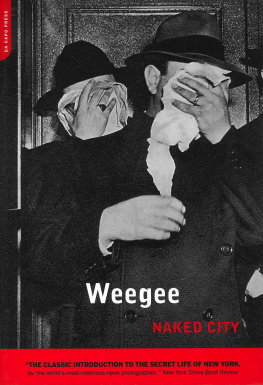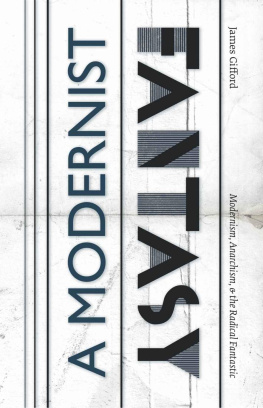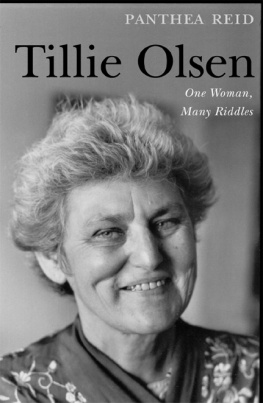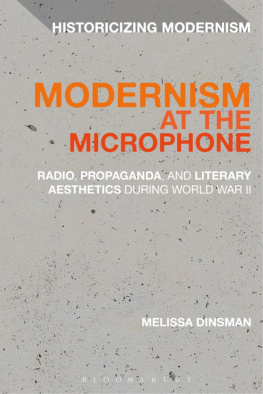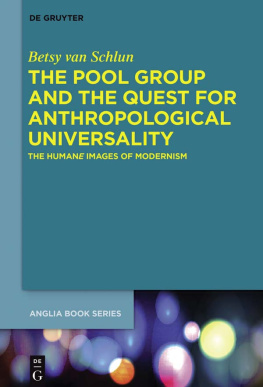SENSATIONAL MODERNISM
CULTURAL STUDIES OF THE UNITED STATES
Alan Trachtenberg, editor
Editorial Advisory Board
| Michele Bogart | Eric Lott |
| Karen Halttunen | Miles Orvell |
| Mae Henderson | Jeffrey Stewart |
| James Livingston |
2007
The University of North Carolina Press
All rights reserved
Set in Bodoni Book, Futura, and Mostra types
by Tseng Information Systems, Inc.
Manufactured in the United States of America
The paper in this book meets the guidelines for permanence and durability of the Committee on Production Guidelines for Book Longevity of the Council on Library Resources.
Library of Congress Cataloging-in-Publication Data
Entin, Joseph B.
Sensational modernism : experimental fiction and photography in thirties America / by Joseph B. Entin.
p. cm. (Cultural studies of the United States)
Includes bibliographical references (p. ) and index.
ISBN 978-0-8078-3136-6 (alk. paper)
ISBN 978-0-8078-5834-9 (pbk. : alk. paper)
1. American fiction20th centuryHistory and criticism. 2. Experimental fiction, AmericanHistory and criticism. 3. Art and literatureUnited StatesHistory20th century. 4. Documentary photographyUnited StatesHistory20th century. 5. Mass media and artUnited States. 6. Modernism (Literature)United States. 7. Visual perception in literature. 8. Social problems in literature. 9. Poverty in literature. 10. Poor in literature. I. Title.
PS374.E95E58 2007
813.5209355dc22 2007005601
An earlier version of chapter 3 was published as Modernist Documentary: Aaron Siskinds Harlem Document, Yale Journal of Criticism 12, no. 2 (1999): 35782; used by permission of the Johns Hopkins University Press. Portions of chapters 4 and 5 first appeared as Monstrous Modernism: Disfigured Bodies and Literary Experimentation in Yonnondio and Christ in Concrete, in The Novel and the American Left: Critical Essays on Depression-Era Fiction, ed. Janet Galligani Casey (Iowa City: University of Iowa Press, 2004), 6180; used by permission of the publisher.
11 10 09 08 07 5 4 3 2 1
For my parents and for Sophie
CONTENTS
1 SCRUTINY, SENTIMENT, SENSATION
American Modernism and the Bodies of the Dispossessed
2 SENSATIONAL CONTACT
William Carlos Williamss Short Fiction and the Bodies of New Immigrants
3 MODERNIST DOCUMENTARY
Aaron Siskinds Harlem Document
4 A PIECE OF THE BODY TORN OUT BY THE ROOTS
James Agee, Tillie Olsen, William Faulkner, and the Contingencies of Working-Class Representation
5 MONSTROUS MODERNISM
Laboring Bodies, Wounded Workers, and Narrative Heterogeneity in Pietro di Donatos Christ in Concrete
6 NO MANS LAND
Richard Wright, Stereotype, and the Racial Politics of Sensational Modernism
CONCLUSION
Modernism, Poverty, and the Politics of Seeing
ILLUSTRATIONS
I.1. A Falling Man Kills a Boy, New York World (1896)
I.2. Hugo Gellert, Primary Accumulation (1934)
I.3. Margaret Bourke-White, McDaniel, Georgia (1937)
1.1. Dorothea Lange, Destitute pea pickers in California (1936)
1.2. Walker Evans, Sharecropper Bud Fields and his family at home (1936)
1.3. Weegee, Their First Murder (1941)
1.4. Weegee, Heat
1.5. Weegee, Crowd at Coney Island (1940)
3.1. Aaron Siskind, Untitled [man lying on a bed] (ca. 193240)
3.2. Aaron Siskind, Saloon, Smalls Paradise (ca. 1937)
3.3. Aaron Siskind, Church Singer (ca. 193740)
3.4. Gordon Parks, Washington, D.C. Government charwoman (1942)
3.5. Aaron Siskind, Pullman Porters (ca. 1935)
3.6. Aaron Siskind,
3.7. Aaron Siskind, cabaret performers (ca. 1937)
3.8. Aaron Siskind, Savoy Dancers (ca. 1937)
3.9. Aaron Siskind, Amateur Performer, Apollo Theater (ca. 193740)
5.1. Lewis Hine, Skyboy (193031)
5.2. Lewis Hine, A derrick man (193031)
6.1. Dorothea Lange, Hoe culture. Alabama tenant farmer (1936)
6.2. Jack Delano, Sharecropper,
6.3. Russell Lee, Empty lot and houses, Chicago, Illinois (1941)
6.4. Jack Delano, Sharecroppers son (1941)
6.5. Ben Shahn, Cotton pickers, Pulaski County, Alabama (1935)
6.6. Jack Delano, Migrant potato picker, North Carolina (1940)
C.1. Weegee, Mrs. Berenice Lythcott and her one-year-old son Leonard (1943)
ACKNOWLEDGMENTS
In the course of working on this project, I have benefited enormously from the generosity of many people, and it gives me great pleasure to express my gratitude. For a sense of what cultural studies can be and do, I am indebted to Dick Ohmann and Joel Pfister. Joels infectious enthusiasm for critical thinking and Dicks big-hearted radicalism showed me why teaching matters and convinced me I wanted to be a teacher myself. In Yales American Studies Program, Jean-Christophe Agnew, Laura Wexler, Matthew Jacobson, Franny Nudelman, Bryan Wolf, Alicia Schmidt Camacho, and Vicki Shepard each supported me and my work at crucial moments, and I remain exceedingly grateful to them. Alan Trachtenberg has provided a model of exceptional intelligence and rigor, and his support for this project has been essential. Michael Denning deserves special thanks; his creative thinking and dedication to activist intellectual work have long inspired me, and without his early and unwavering encouragement this project would not have been completed.
This project was shaped by the struggle for union recognition and social justice in New Haven carried out by the Graduate Employees and Students Organization and the Federation of University Employees. I am immensely grateful to the staff members and organizers of GESO, especially those in American studies, who, with great flair and conviction, showed me that labor activism, teaching, and research could be combined in remarkably synergistic and generative ways. I am particularly indebted to Rebecca Schreiber and Cynthia Young, and to Gaspar Gonzlez, Scott Saul, and Brendan Walsh, whose friendship and solidarity have buoyed me for years, and whose own work, both inside and outside the academy, continues to amaze and inspire me. I also want to thank the members of the Radical Teacher editorial collective for their encouragement and perverse humor. Will Holshouser, Kathy Belden, and the members of Commonplace provided music, good cheer, and other forms of beautiful and necessary distraction. I have also been aided by advice and assistance from a host of kindhearted friends and colleagues, including Steve Biel, Sara Blair, Sarah Chinn, Lenny Davis, Jeanne Follansbee Quinn, Alyosha Goldstein, Larry Hanley, Bayard and Betsy Klimasmith, Paul Lauter, Bill Mullen, Kathy Newman, Lee Quinby, Robert Perkinson, Bob Rosen, Maren Stange, Pat Willard, Leonard Vogt, Janet Zandy, Sandy Zipp, and the late Shafali Lal. In 1997, I spent an afternoon with Tillie Olsen; her commitment to social change and her extraordinary generosity of spirit stirred me immensely and helped put this project in motion.
My work on this project has been made possible by generous institutional support. In 20022003 I was awarded a postdoctoral fellowship at the American Academy of Arts and Sciences, and I am grateful to Leslie Berlowitz, the academys director, and to Sandy Oleson and the academy staff. I particularly want to thank James Carroll and the other fellows, especially Andy Jewett, Ann Mikkelson, and Jay Grossman, whose friendly criticisms of portions of this manuscript were vital to my revisions. Fellowships from the PSC-CUNY Research Award Program and the Mrs. Giles Whiting Foundation provided release time that allowed me to complete the manuscript. The Aaron Siskind Foundation, Getty Images, the Mary Ryan Gallery, Jonathan Toby White, and the Avery Architectural and Fine Arts Library at Columbia University kindly granted permission to reprint visual images.
Next page

